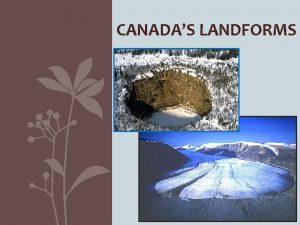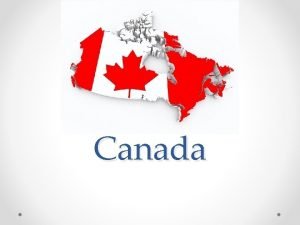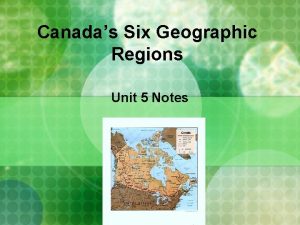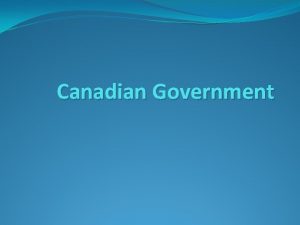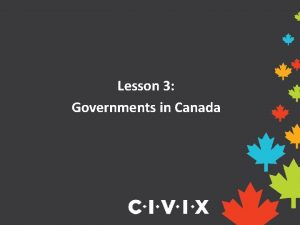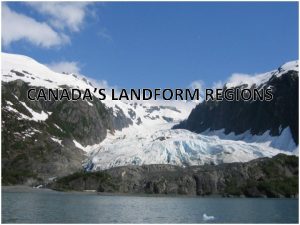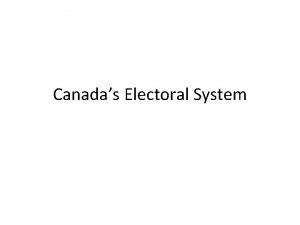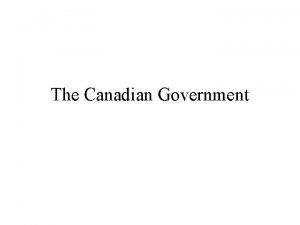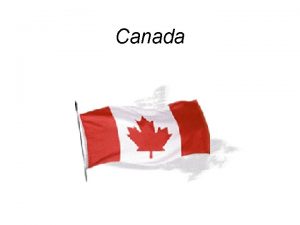Canadas Government System Canadas Government 1 Canada was







- Slides: 7

Canada’s Government System

• Canada's Government: • 1. Canada was created by the British government when it passed the British North American Act (BNA) in 1867. • 2. The BNA Act brought together the four British colonies of • Ontario, Quebec, Nova Scotia, and New Brunswick to from the Dominion of Canada. • 3. Those who drew up the BNA Act were influenced by the Civil War in the U. S. believing that the states had too much power. • 4. Therefore, the national government has strong powers in such areas as taxation, defense, and banking.

Executive Branch Canada and the United States • Canada • United States • Governor General • President – – David Johnston Head of State Role is symbolic Selected by the Prime Minister – Position alternates between a Francophone and an Anglophone – – Barack Obama Head of State Role is significant Selected by the vote of the people

Executive Branch • Prime Minister and Cabinet – Stephen Harper – Head of Government – Elected by members of Parliament – Chosen because he is the leader of the majority party • Cabinet

Legislative Branch • Canada • House of Commons – Passes legislation – Representation is based on population – 305 members • Ontario = 106 members • Quebec = 74 members – The party that elects the most MPs becomes the ruling party • United States • Senate – – Passes legislation 2 members from each state 100 total members 4 year term

Legislative Branch • Senate – Senators are appointed not elected – Appointed by the Prime Minister – Hold office until age 75 – 105 members • House of Representative – Representation is based on population – 435 members – 2 year term

Advantages/Disadvantages Advantages • Does not concentrate power in one branch (United States) • Executive and Legislative branches work together same party (Canada) • Change of government occurs when the Prime Minister loses support of the House of Commons (Canada) Disadvantages • Executive and Legislative branch may be of different parties, slowing progress in government business (United States) • The Senate does not represent provinces in the central government (Canada) • Non-Cabinet members in Parliament have little power (Canada)


